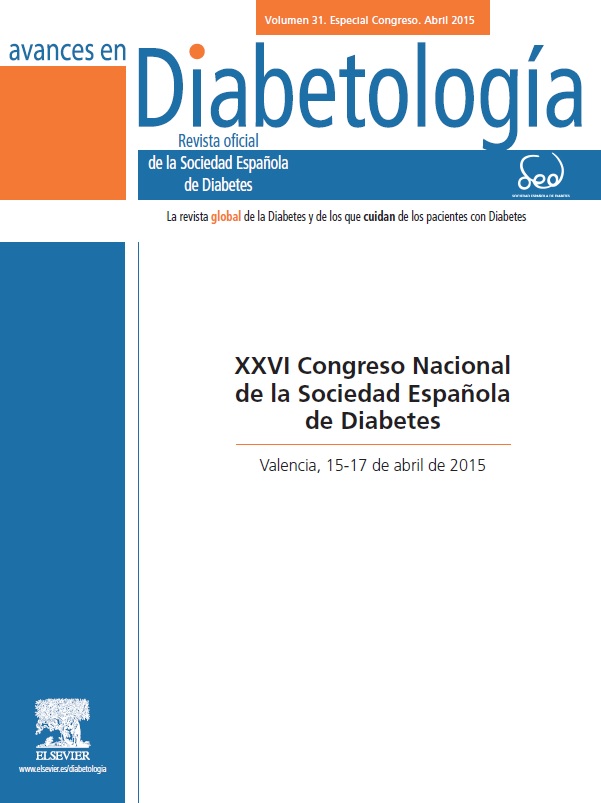P-072. - PROGRESSION FROM PREDIABETES TO DIABETES ACCORDING PREDIABETES DEFINITIONS
aCentro de Salud Martin de Vargas. Madrid. bUniversidad Complutense de Madrid. Madrid. cCentro de Salud Porriño. Pontevedra. dCentro de Salud Hereza. Leganés. eCentro de Salud Raval-Sud. Barcelona.
Objectives: To estimate the incidence of diabetes in subjects with prediabetes when assessed by the new glycated haemoglobin A1c (HbA1c) 5.7–6.4% criterion or by impaired fasting glucose.
Material and methods: The data come from PREDAPS study, a prospective observational study of a cohort of 1184 subjects with prediabetes and another cohort of 838 subjects without alterations in glucose metabolism aged 30 to 74 years. The data at baseline were obtained from patients attended in Primary Health Care Centres in Spain throughout 2012. Participants with a baseline diagnosis of prediabetes according to HbA1c 5.7–6.4% or impaired fasting glucose (IFG) (fasting plasma glucose between 100 and 125 mg/dl) or both, were divided into three groups on the basis of baseline diagnosis of prediabetes. Rate of progression to diabetes was assessed after a mean of 1.8 years of follow-up.
Results: At baseline 316 (26.7) of 1,184 subjects with prediabetes were diagnosed with prediabetes on the basis of the HbA1c 5.7–6.4% criterion, 254 (21.5%) on the basis of impaired fasting glucose (IFG) criterion and 614 (51.9%) on the basis of both criteria. The incidence rate of diabetes was 3.5% in subjects with prediabetes (1,984 person-years at risk and 69 cases). Progression to diabetes differs depending on the criteria used to classify subjects with prediabetes: incidence rate was 0.9% for HbA1c alone (538 person-years at risk and 5 cases), 1.8% for IFG alone (433 person-years at risk and 8 cases) and 5.5% for diagnosis by both IFG and HbA1c (1,013 person-years at risk and 56 cases).
Conclusions: In Spain, the incidence of diabetes in subjects with prediabetes was lower than that observed in studies in other countries. Likewise, the incidence of diabetes in subjects with prediabetes diagnosed with IFG criterion was twice higher than in subjects diagnosed with the criterion of glycated hemoglobin. These findings also differ from the findings from studies in other countries, since evidence suggests that risk of diabetes development on the basis of both criteria of prediabetes is similar.





